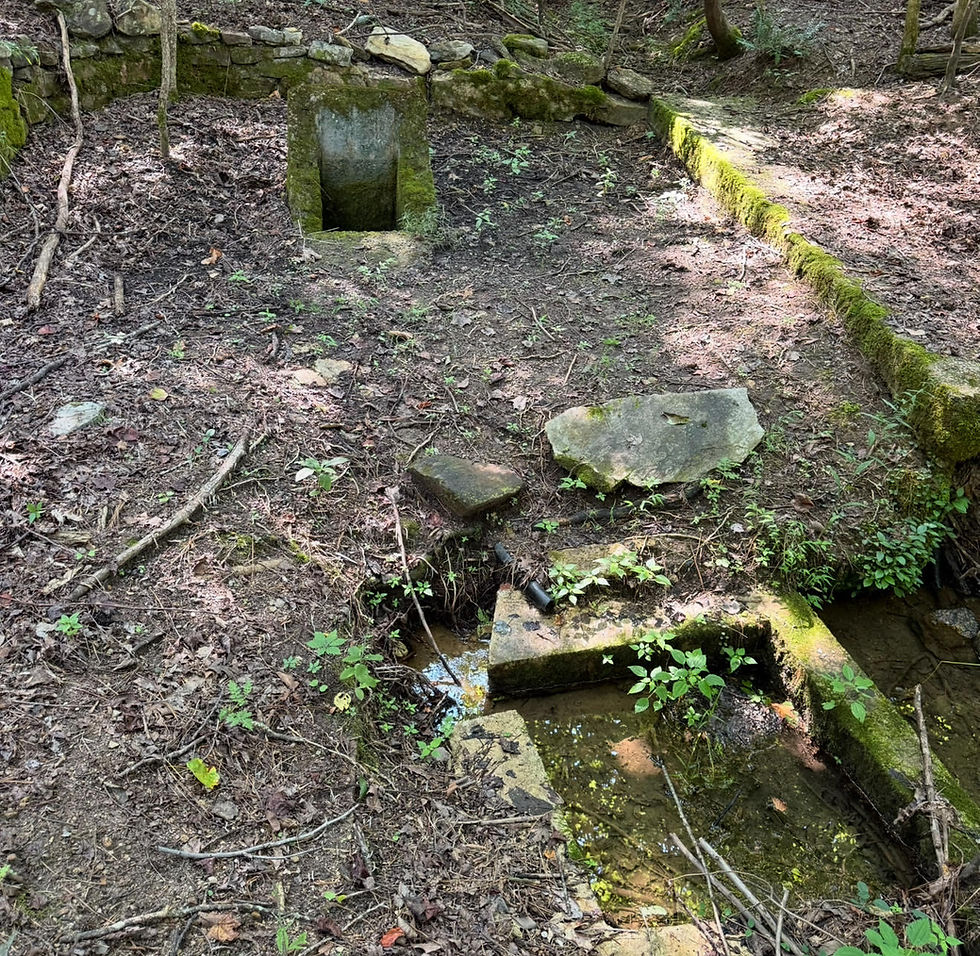Ancient Indian Rock Mounds in Pickens County
- Christopher

- Nov 12, 2020
- 3 min read
Updated: Nov 24, 2020
High atop Rich Mountain there is a half acre site with 95 stacks of Indian rock piles.

Ancient Sites within Pickens County
Pretribal Indians throughout North America had left remnants of their ceremonial sites in the forms of cairns. According to the Online Etymology Dictionary, a cairn is large, conical heap of stone, especially of the type common in Scotland and Wales and also found elsewhere in Britain, 1530s, from Scottish carne, akin to Gaelic carn "heap of stones, rocky hill" and Gaulish karnon "horn," perhaps from PIE *ker-n- "highest part of the body, horn," thus "tip, peak" (see horn (n.)). Many of these sites are found in the northeastern part of our nation.
There are examples in Pickens County as well. The most famous being found in Big Canoe at the Indian Rocks Park. Margaret Clayton Russell in 1970 researched the sites found near the location of the Spring that fills Lake Petit. Mrs. Russell determined most of the site to be comprised of archaic Indian artifacts and believed it to be several thousand years old.
According to her research:
Margaret Russell investigated two stone cairns from a cluster of 16 in a section of Pickens County, Georgia, two counties southeast of Murray County. Two other clusters of stone mounds were in the area and there they were located on the east upper slopes of two hills. No artifacts, features or recognizable chemical differences in the soil were found. The land owners had collected a few projectile points in low areas of the property and they fell within the Archaic period from about 7000-2000 B.C. Artifacts made of non-local chert included a small basally notched Eva point, a LeCroy Bifurcated point, a rounded base corner notched early Archaic form and a few flake tools. Items made of quartz, found locally, included a Dalton point, two Big Sandy points'; three crude triangular points and several later Archaic points.
A lesser known site still exists mostly undisturbed today near Sharp Mountain and Rich Mountain. On the side of a hill in a remote location of Pickens County there are 95 stacks of assembled field stones. In 1991, historian Robert Scott Davis, Jr. first wrote about this location in A North Georgia Journal of History Vol. II. These cairns have no apparent arrangement to the order of their placement on the land. Some piles are distributed in a flat arrangement and others are several feet high.
The cairns from both sites look remarkably similar. Both cairn sites are near springs that fed creeks that were affiliated with more modern Indians. One spring was the source of Petit creek that ran near Wolfscratch Village. The other spring – the source of Scarecorn Creek, ran to the village at Murphy Bottoms (Located at the intersection of Scarecorn Creek and Jerusalem Church Road)
A third example of archaic Indian relics was located within the area now known as Bent Tree. In 1970, anthropologist Robert L. Blakely excavated over seventy sites finding more than 50 artifacts. All of the artifacts found within Bent Tree were from the archaic period and mostly made of quartz. Interestingly there were no examples of pottery found within Bent Tree. Pottery was a much later development within the Indian tribes.
Most people aren’t aware of the earliest mention of a location named with present day Pickens County. History has it that in 1779, General Andrew Pickens (the man for who our county is named) and a number of his soldiers went after the Sharp Mountain village (Cherokee) only to discover that their British agent, Alexander Cameron had escaped. The British had been collaborating with the Cherokee to fight the colonists. This mention of Sharp Mountain is one of the earliest recorded documents regarding Pickens County.
Is it possible that the tribe mentioned in Pickens’ writing was the same that resided along Scarecorn Creek? Is there a connection between the location of ceremonial sites being near important sources of water? Most Indians lived in alluvial planes and revered the sun and the water. Why not deem such sources of life sacred? Remarkably, these ancient sites are still beautifully preserved, thousands and thousands of years later, here in Pickens County.



Comments